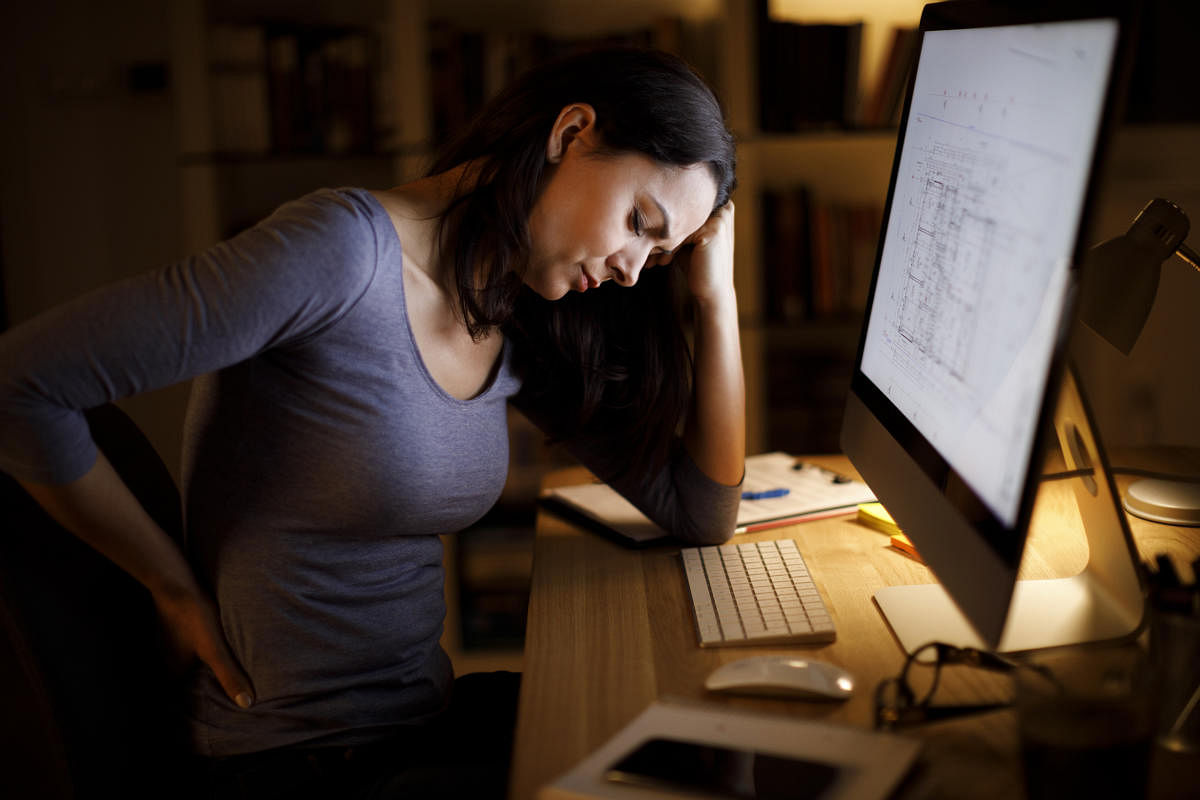
Isolation, and work from home during the pandemic came with its own rues. With longer working hours, limited physical activity and increased stress, chronic body pain cases are on the rise, according to city doctors.
Chronic pain refers to prolonged or persistent pain that lasts for weeks or months.
Dr Roshan Adappa, associate consultant, anesthesia and pain management, at a private hospital, says chronic pain issues have risen of late. “Of the aches seen among Bengalureans, 50% concern low back pain, 16% neck pain and 11% shoulder pain,” he says.
Many are IT professionals in the age group of 40 to 60. “We saw about 20% rise in cases compared to pre-pandemic times,” he adds.
The work-from-home shift has unfortunately led to an increase in the incidence of chronic pain, which is mainly musculoskeletal in nature, says Dr Adappa. “Decreased activity increases incidents of pain, due to the loss of functionality and deconditioning.”
Spending a lot more time in front of the computer without breaks, erratic work timings and irregular sitting patterns are other causes.
Sit right, stretch, walk
Ergonomically-correct workstation where the computer is at a comfortable height that will not strain the neck or shoulders is the best way.
Dr Adappa says, “The individual’s feet should not be hanging, and should be adequately relaxed. Performing regular eye exercises, taking regular breaks every hour and drinking plenty of water, often helps.”
Regular deep breathing exercises will help reduce the mental strain. “Walking daily and stretching the Trapezius muscle (in upper back), Sternocleidomastoid muscle (in neck) and shoulder muscle and lower back muscles, will help. ‘Suryanamaskar’ is an ideal solution.”
One can do numerous stretches just by sitting on one’s chair. Babu J, chief physiotherapist and HOD at a private hospital, observes when one is in pain, they stop exercising. “When one’s muscle is already weak, restricted exercise adds to the concerns. One must relieve the pain by doing stretching exercises, which can be found online and easily practiced. Regain joint range of motion, strengthen muscles, and endurance is the way to go,” he explains.
“Start by stretching calf muscles, proceed to hamstrings, stretching glutes muscles,” he adds.
At work desks, flex your knee joint, give good support to your back by adding two to three pillows underneath your knee joint, and do stretching exercises. Make sure your legs are placed on the floor at a 90 degree angle, and you walk around every 30 minutes. Irregular sleep and food habit changes can also aggravate the pain, say experts.
Watch your metabolism
Long hours of sitting, and the assumption that eating gives energy can wreak havoc, says Dr Priyanka Rohatgi, chief clinical dietician with a private chain of hospitals.
Excessive sitting slows down the metabolism, which affects one’s ability to regulate blood sugar and blood pressure, metabolise fat, and strengthen the muscles and bones. “Metabolism slows down by 90 per cent after 30 minutes of sitting. Enzymes that move bad fat from arteries to muscles to burn it off, slow down. Muscles in your lower body get turned off and after two hours, good cholesterol drops by 20 per cent,” she explains.
Add to diet
Focus on eating healthy and watch out for calorie-dense, refined and junk food.
Avoid excess amount of high-fat, salt and sugar foods. They aggravate inflammation and muscle soreness.
Add berries and nuts to your diet. They are a good source of omega-3 fatty acids and help fight inflammation.
You can also have seed oils, pineapple, turmeric, garlic and avocado in moderation.
Hydrate yourself with green tea, infused water, soups and tender coconut water.
Treatment options
Pain medications can be either musculoskeletal (anti-inflammatory drugs) or neuropathic medications. Physiotherapy and techniques like Dry needling, ultrasound therapy, acupuncture, hydrotherapy and mindfulness techniques are also sought. “Depending on the intensity of the patients, pain specialists can advise ultrasound or X-ray guided injections to block the nerves which may be responsible for the pain. These injections contain a combination of local anaesthetic and steroids that provide relief for a longer time,” explains Dr Adappa.